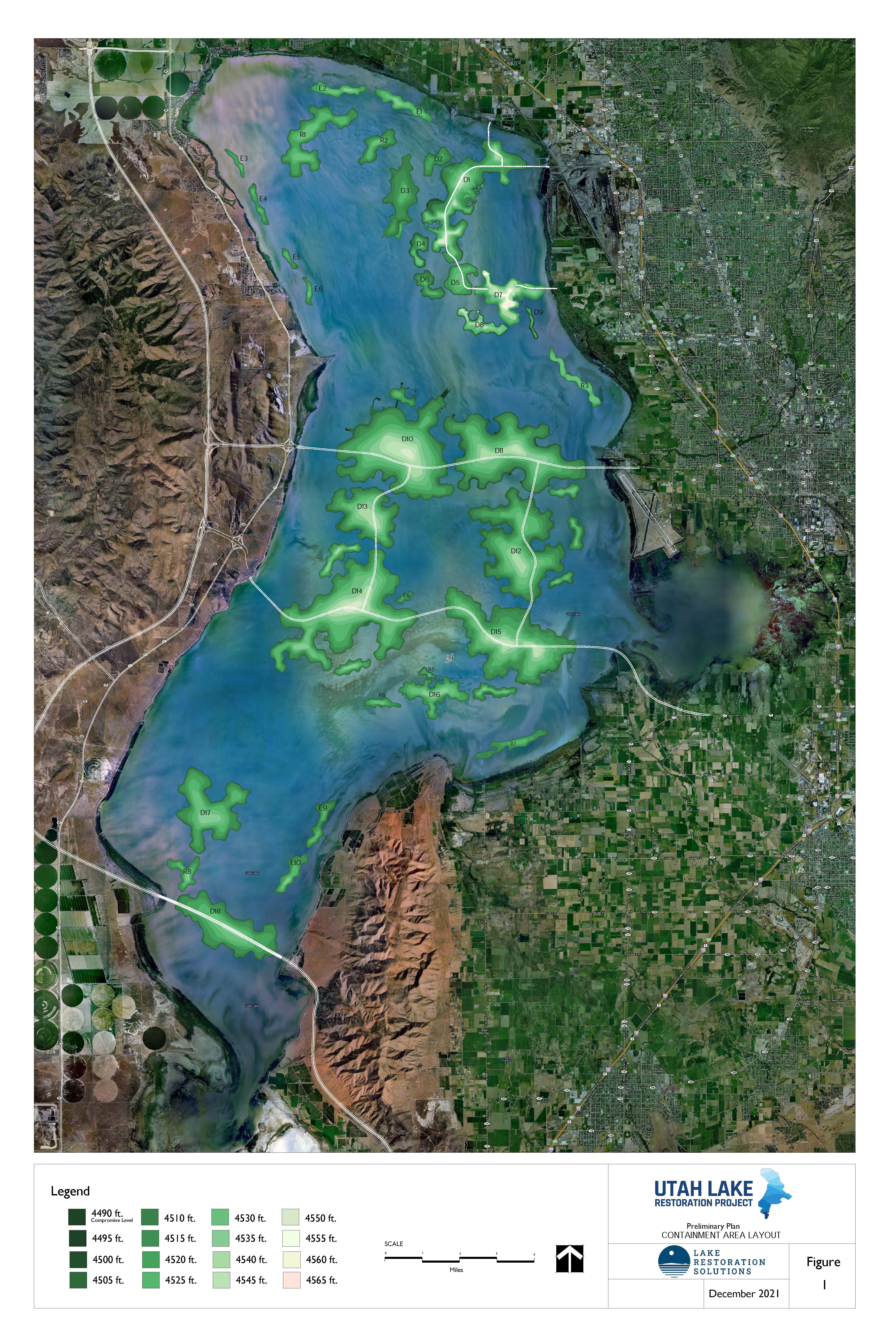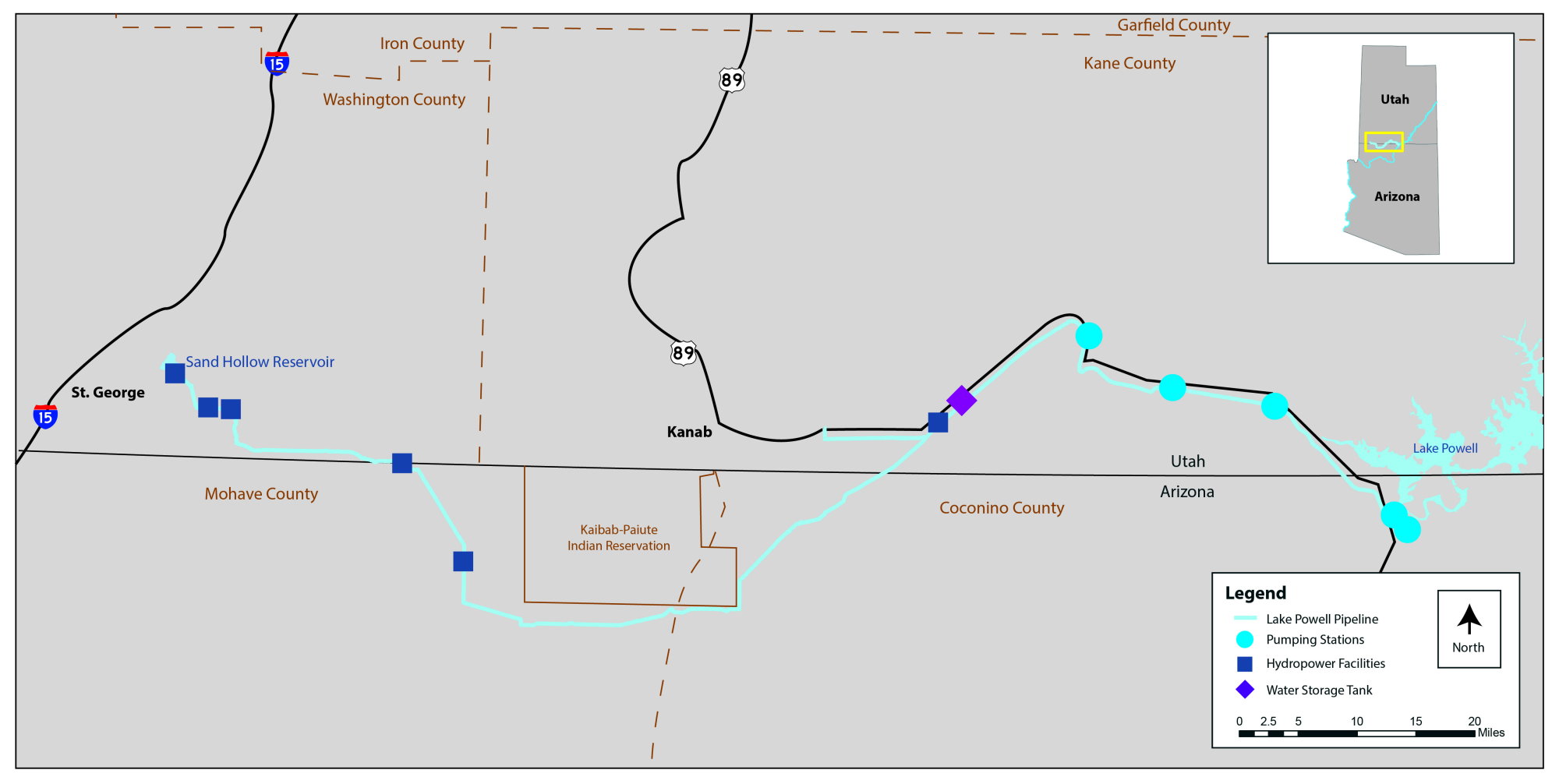
By Stan Holmes, Utah Chapter
Utah's population is projected to reach 5 million by 2050, having grown 18.4% over the past decade. Our dwindling water resources won't sustain that many people at current levels of municipal, industrial, and agricultural consumption. A 20-year drought and record heat linked to climate change hasn't helped.
Utah Governor Spencer Cox says it's time to stop kicking canteens down the road. Standing next to what's left of the Great Salt Lake, Cox announced the creation of a four-part Coordinated Action Plan for Water. Set for release through 2022, the plan is said to address infrastructure needs, municipal-industrial use, agricultural "optimization," and water source management.
The challenges are many. Utah's low water and sewer rates are often embedded in property taxes and do not reflect the true costs of consumption. Secondary water used for irrigation is not metered. The "use it or lose it" stipulation for privately held water rights incentivizes irresponsible water use. And taxpayers continue to subsidize and patronize the fossil fuel industry, driving global warming-related water depletion.
With powerful special interests that are dedicated to preserving the status quo, change will not come easily. But the governor's call for spending $520 million on water issues in the new year is a step in the right direction, though long overdue. Perhaps it’s a signal that at least some long-ignored problems will finally get attention.
Much of the state's new water spending would come from federal COVID-19 relief funds. For example, the $25 million Cox has proposed for Utah Lake restoration taps American Rescue Plan Act (ARPA) money. His action plan identifies Utah Lake, the Great Salt Lake, and Bear Lake as three water bodies warranting special attention, but avoids mention of two controversial water projects promoted in his One Utah Roadmap, namely, the Bear River and Lake Powell Pipeline projects, along with the Pine Valley water pipeline, for which he has indicated support.
 Controversy swirls around all of these water projects. Utah Lake faces growing threats of degradation from developers like Lake Restoration Solutions, LLC (LRS) and their legislative allies who would dredge the lake to construct a network of man-made islands and roadways that could house 500,000 residents. Utah legislators seek creation of an independent Utah Lake Authority (ULA) patterned on the Utah Inland Port Authority (UIPA), similarly prioritizing industry profits over the public good.
Controversy swirls around all of these water projects. Utah Lake faces growing threats of degradation from developers like Lake Restoration Solutions, LLC (LRS) and their legislative allies who would dredge the lake to construct a network of man-made islands and roadways that could house 500,000 residents. Utah legislators seek creation of an independent Utah Lake Authority (ULA) patterned on the Utah Inland Port Authority (UIPA), similarly prioritizing industry profits over the public good.
Like UIPA, the ULA would assume territorial jurisdiction and control further development through taxpayer-backed financial instruments, such as infrastructure bonds. As Utah County residents, the Conserve Utah Valley group, and the scientific community all organize to oppose the project, LRS has countered with a lawsuit meant to silence the lead opposition scientist, an ecosystem ecologist at BYU. Meanwhile, the Army Corps of Engineers has launched an environmental review and is taking public comments.
 Further north, the Bear River system is the primary water source for the Great Salt Lake (GSL), which has been depleted to a historic low due to reduced annual precipitation paired with high agricultural water consumption. The Bear River Development project Cox endorses would prevent 25-30% of river water from reaching the GSL and pipe it south to Wasatch Front communities. According to the Utah Rivers Council, much of the diverted water would be used on lawns.
Further north, the Bear River system is the primary water source for the Great Salt Lake (GSL), which has been depleted to a historic low due to reduced annual precipitation paired with high agricultural water consumption. The Bear River Development project Cox endorses would prevent 25-30% of river water from reaching the GSL and pipe it south to Wasatch Front communities. According to the Utah Rivers Council, much of the diverted water would be used on lawns.
A huge Bear River reservoir is planned for Whites Valley near the Idaho border, displacing local farmers and ranchers. And while Salt Lake City and other recipients might gain municipal water, they would also breathe more toxic dust from the increasingly exposed GSL lake bed.
Cranes in the city. Pipelines in the desert. The proposed Pine Valley and Lake Powell projects would cross more arid terrain than their Bear River counterpart; but the goal of all three is the same: shift more water to satisfy the demands of rapid urban growth.
 The Pine Valley Water Supply Project has been dubbed "Cedar City Water Grab" by conservationists of the Great Basin Water Network. Like the earlier Las Vegas "Water Grab" successfully fought by GBWN, it is intended to subsidize big city bad habits by pumping and piping desert valley aquifer water to increasingly consumptive urban entities: residential, commercial, and industrial.
The Pine Valley Water Supply Project has been dubbed "Cedar City Water Grab" by conservationists of the Great Basin Water Network. Like the earlier Las Vegas "Water Grab" successfully fought by GBWN, it is intended to subsidize big city bad habits by pumping and piping desert valley aquifer water to increasingly consumptive urban entities: residential, commercial, and industrial.
Welcome to "Port 15" [think I-15], as Cedar City is now known in inland port circles. A leading candidate for "satellite port" status in UIPA's expanding constellation, Cedar City's population growth and new industrial ventures require more water than its Cedar Valley aquifer can provide. So, with help from the Central Iron County Water Conservancy District, Cedar City is trying to extract water from Pine Valley aquifer wells some 60 pipeline miles to the north.
That's Phase 1 of a project eventually extending water taps to aquifers in the Wah Wah and Hamblin valleys of Utah's West Desert. But people already live in those valleys and already struggle to survive under area-wide drought conditions. Many are not happy to see their communities sacrificed for water wastrels in Cedar City, and likely wonder why Governor Cox–a rural guy–praised Iron County's water program as a model worthy of replication statewide.
A point not lost on stewards of the Great Salt Lake is the interconnectedness of West Desert valley aquifers from Iron County north through Tooele County to the GSL. And Nevada water officials will note that impacts to aquifers linked under the Utah border could harm Nevadans. The BLM has issued a draft environmental impact statement (EIS) on the Pine Valley project, with comments taken until March 11.
Lake Powell Pipeline (LPP) appears among those priority projects in the governor's One Utah Roadmap that shouldn't pass muster if his Coordinated Action Plan for Water is to be taken seriously. With the lake at 27% of capacity and its continued ability to produce hydroelectric power in question, pumping additional Colorado River water to St. George and other growing Washington County communities is not a sustainable solution.

Utah Rivers Council reports that the proposed 140-mile, $2.4 billion taxpayer-subsidized Lake Powell Pipeline project has already drawn fire from six Colorado River Basin states threatening lawsuits to stop it. In response, the 2021 Utah Legislature established a Colorado River Authority of Utah with funding to fight fellow members of the Colorado River Compact for access to the water. As trouble brews on several fronts, the pro-LPP Washington County Water Conservancy District might instead encourage conservation measures similar to what Las Vegas has adopted since its water grab was denied.
This article spotlights a few key issues associated with water challenges facing Utahns, but barely touches specific water policy and program changes needed at the neighborhood, factory, and farm field levels. These will be addressed in subsequent Utah Sierran articles as elements of the governor's water action plan unfold through the year.